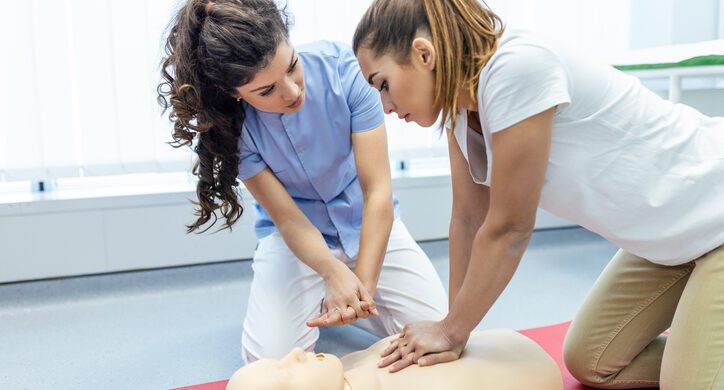Cardiac arrest is a life-threatening emergency that can strike anyone, anywhere, at any time. In such a critical situation, every second counts, and immediate intervention can mean the difference between life and death. Bystander cardiopulmonary resuscitation (CPR) is a crucial link in the chain of survival, and by learning this life-saving technique, you can become a hero in someone’s darkest hour.
Understanding Cardiac Arrest
Cardiac arrest occurs when the heart suddenly stops beating effectively, leading to a cessation of blood flow to vital organs. This can result from a variety of causes, including heart attacks, severe trauma, drowning, or certain medical conditions. Without prompt intervention, irreversible brain damage and death can occur within minutes.
The Importance of Bystander CPR
Bystander CPR plays a pivotal role in the chain of survival. It can double or even triple a victim’s chances of survival if administered within the first few minutes of cardiac arrest. This is because CPR helps maintain a minimal level of blood circulation and oxygenation to the brain and other vital organs until advanced medical help arrives.
Unfortunately, many cardiac arrest victims do not receive timely CPR, often due to bystanders’ hesitancy or lack of knowledge. By becoming trained in CPR, you can be prepared to take immediate action and significantly increase a victim’s chances of survival.
The ABCs of Bystander CPR
Bystander CPR involves three key steps, commonly referred to as the “ABCs”:
A for Airway: Ensure the victim’s airway is clear. Tilt their head backward and lift the chin up to open the airway.
B for Breathing: Deliver rescue breaths to provide oxygen to the victim’s lungs. Pinch the victim’s nose shut and give two slow, steady breaths. Each breath should make the victim’s chest rise visibly.
C for Circulation: Perform chest compressions to manually pump blood through the victim’s body. Place the heel of one hand on the center of the victim’s chest (just below the nipple line) and the other hand on top. Use your body weight to push hard and fast at a rate of 100-120 compressions per minute.
Remember, the goal is to maintain a continuous cycle of 30 chest compressions followed by 2 rescue breaths. Continue this cycle until the victim starts breathing on their own, or until professional medical help arrives.
Overcoming Common Concerns
Many people hesitate to perform CPR due to fears of doing it incorrectly or causing harm. However, it’s important to remember that any attempt at CPR is better than no attempt at all. Even if you’re unsure, providing basic chest compressions can make a significant difference.
Additionally, the “Good Samaritan” laws in many countries offer legal protection to those who provide reasonable assistance in an emergency situation, including administering CPR.
Training and Certification
While anyone can perform CPR, proper training significantly improves the chances of success. Many organizations, such as the American Heart Association and the Red Cross, offer CPR courses that cover the latest techniques and guidelines. These courses often include hands-on practice on mannequins and guidance from experienced instructors.
Remember, it’s not just about learning the technique; it’s also about gaining confidence and the ability to stay calm under pressure, which are crucial elements in any emergency situation.
The Role of Automated External Defibrillators (AEDs)
In addition to CPR, AEDs are powerful tools that can be used in cardiac emergencies. An AED is a portable device that delivers an electric shock to the heart, potentially restoring a normal rhythm. These devices are designed to be user-friendly and provide voice prompts to guide the rescuer through the process.
If an AED is available, use it alongside CPR. Simply follow the prompts, and the AED will analyze the victim’s heart rhythm and advise whether a shock is needed.
Bystander CPR is a simple yet powerful act that can mean the difference between life and death for a cardiac arrest victim. By learning this life-saving technique, you have the potential to be a hero in someone’s life-threatening moment. Remember the ABCs of CPR, seek proper training and certification, and be prepared to take action when it counts the most. Together, we can make a difference in cardiac arrest emergencies and save lives.
Y-CPR Academy provides American Heart Association (AHA) CPR training classes with professional, certified AHA instructors who teach CPR to workplaces, healthcare providers, childcare providers, individuals, and groups. Contact Y-CPR Academy today to learn more and ask about our mobile classes.

